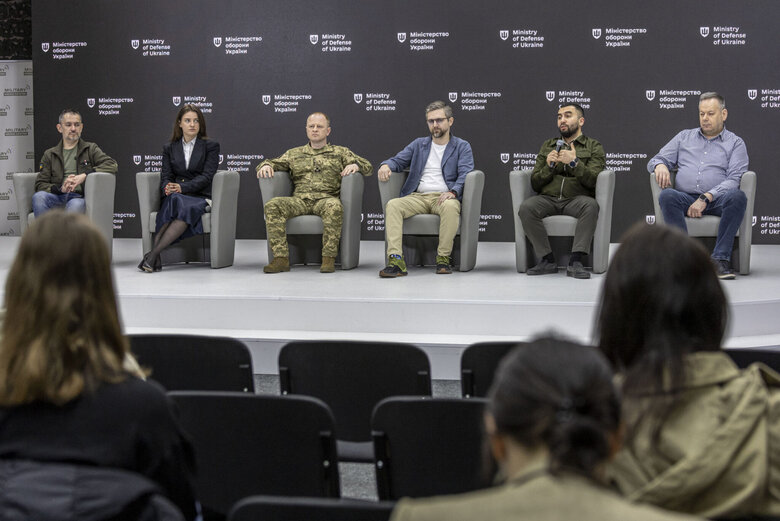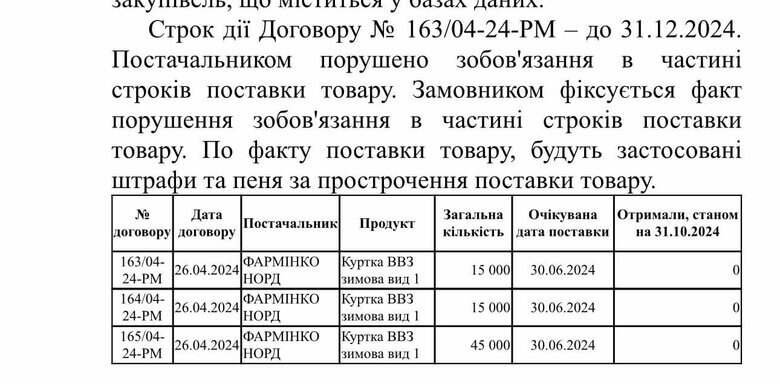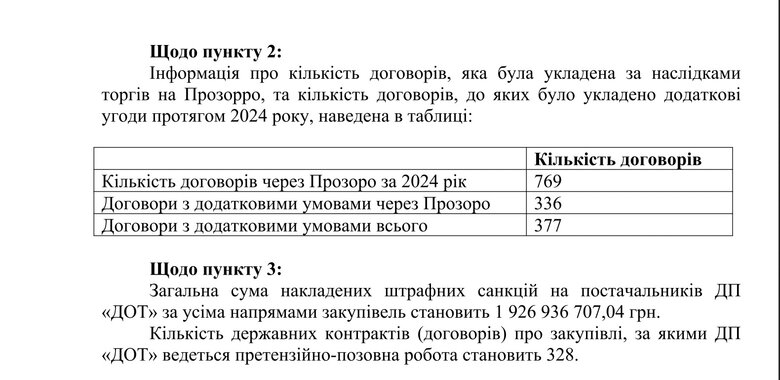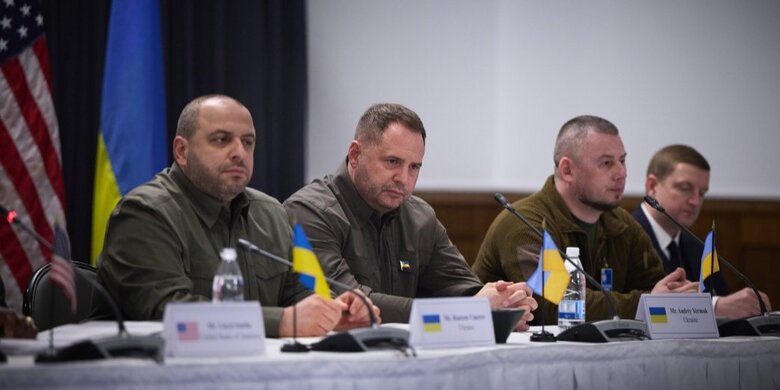NATO’s requirement or their own management: why are DPA and DOT being merged?
On Thursday, Defense Minister Rustem Umerov and the head of the Defense Procurement Agency (DPA), Arsen Zhumadilov, announced the merger of the DPA and the State Operator For Non-Lethal Acquisition (DOT). The announcement came as no surprise, as both had been working on this initiative since the autumn of 2024.
The announced initiative to merge the agencies after the end of martial law is, in fact, aligned with NATO’s recommendations — yet it still raises numerous concerns. These include questions about the leadership of the DOT, the future of supervisory boards, and contracts, since the risks involved vary depending on when martial law ends.
But let’s start from the beginning: how were these agencies created? Back in 2022, before the UAH 17 eggs scandal, but after Ukraine’s international partners had begun to raise serious complaints about Ukrainian special exporters inflating arms prices, then-Defense Minister Oleksii Reznikov announced the establishment of two agencies.
The arms procurement agency was established almost immediately. "I have an ambition for this agency to be more than just a special exporter — ideally, it should function as a kind of military Amazon," the minister said at the time. "When someone submits a request for specific needs, others respond with offers. That’s my dream — for it to include all the world’s leading manufacturers."
The problem was that no agency in the world had ever faced challenges comparable to those Ukraine encountered and none had dealt with the procurement of ammunition.
During its first year, the DPA operated as an ordinary special exporter under the leadership of Volodymyr Pikuzo, who was alternately perceived as either a man of then-Minister Reznikov or of his deputy, Denys Sharapov, but he was hardly seen as an effective procurement officer, as work on a number of contracts ended in failure.
Reznikov began forming the agency for non-lethal acquisition only after the UAH 17 eggs scandal. At the end of April 2023, he presented the creation of a Reform Office within the Ministry, headed by Yuliia Marushevska. Around the same time, Arsen Zhumadilov was introduced to the press as the person tasked with building the agency responsible for non-lethal procurement.
Meanwhile, for another six months, the procurement of food, fuel, and non-lethal supplies for the Ministry of Defense of Ukraine (MoD) remained in the hands of the so-called Collegial Body, which operated under the scandal-ridden State Procurement Department of the MoD.
In principle, Zhumadilov’s appointment as head of the new agency had been planned for early 2024, as it would have been logical to allocate funds in the state budget for the corresponding state enterprise.
However, starting in the fall, accusations began to surface that Reznikov was blocking Zhumadilov’s appointment.
After Reznikov’s dismissal, sources within the MoD admitted that the minister had indeed hesitated over whether to appoint Arsen to the position.
In August 2023, Reznikov did appoint Arsen Zhumadilov as head of the Armed Forces Logistics Support Agency.
The agency was launched under the new minister, Rustem Umerov, although he played little to no role in its establishment, apart from its renaming to DOT, the State Operator for Non-Lethal Acquisition.
It’s worth noting that in the fall of 2023, the idea of merging the two agencies was also discussed for several weeks. However, it was dismissed at the time, as the two agencies had significantly different procurement scopes and procedures.
The idea resurfaced only a year later, at the height of the conflict between Rustem Umerov and then-head of the DPA, Maryna Bezrukova. Initially, the minister had planned to create a separate UAV agency — but then, quite suddenly, shifted course and decided to merge the two existing agencies into one, using DOT as the base structure. These games — from three agencies to one — only further demonstrated that there was no real management strategy, just a power play over financial flows.
In October, even the G7 countries did not support the proposed merger, stating that such a move would only be appropriate after the end of martial law. Following this, during a meeting with the Ministry of Defense’s Anti-Corruption Council, the minister publicly pledged to allow both agencies to continue operating independently for the time being.
At the end of January 2025, Umerov dismissed Maryna Bezrukova, head of the DPA, and appointed Arsen Zhumadilov as acting head. Until March 6, the former chief of the DOT effectively held both positions, transferring part of his team to the DPA.
Photo: Natalia Kravchuk
For example, Tetiana Kharchenko, the strategic communications adviser, can now be seen attending meetings at both the DPA and the DOT. The same applies to Dmytro Bihunets, head of the compliance division.
"Arsen didn’t formally appoint some of his people to specific positions — in the best case, they were brought in as advisers. For over a month, a number of staff at the DPA remained in limbo, waiting for reappointments. Some packed up and left altogether, others were reassigned to different roles. As a result, the situation at the DPA reached the point where at times, there was simply no one available to process payments in the system," former staff members say.
At a February meeting with the Public Anti-Corruption Council (PAC), Arsen Zhumadilov acknowledged that around 100 people were in the process of being reappointed due to changes in the DPA’s staffing schedule.
It later emerged that much of this new staffing structure had been copied directly from the "DOT’s model". The DPA (which had come under heavy criticism during Bezrukova’s tenure), for employing four PR specialists, now ended up with 23. Meanwhile, the procurement department had only 12 employees, the customs support department had 5, and the supplier verification department — 10.
Zhumadilov refused to provide the DPA’s staffing schedule to Member of Parliament Viktoriia Siumar. However, during a meeting with journalists, he did not deny the presence of 23 PR staff. He explained this by saying that several departments, including international relations, had been consolidated.
In reality, this was a direct copy of the DOT staffing model, which includes 24 PR personnel.
According to the author’s sources, work to merge the two agencies had been underway at DOT since the fall. This was also indirectly reflected in the fact that Umerov appointed only an acting head of DOT.
It is also evident that the minister wanted to ensure he had his own appointee heading the DPA, as he named two government representatives to the supervisory board only after Zhumadilov was appointed director of the DPA.
As early as the beginning of April, the author learned of the formation of a commission to oversee the agencies’ merger. However, it was not until early May that Arsen Zhumadilov announced this publicly.
"At this stage, a key task is the comprehensive integration of DOT’s experience in process standardization and digitalization, as well as the unification of supplier and product requirements — into the weapons procurement procedures overseen by the DPA," Zhumadilov wrote on his Facebook page.
"Today, the Ministry of Defense launched preparations for the creation of a unified procurement agency. This is a step toward a single procurement agency for all Defense Forces — a NATO requirement. An order was signed to establish the Commission for the Reorganization of the State Operator for Non-Lethal Acquisition. I have been appointed head of this Commission," he noted.
Whether it truly makes sense to merge the two agencies — and whether DOT is genuinely a model of efficiency — remains to be seen.
- "Efficiency" in working with suppliers
Let’s start with the "unification of supplier requirements" that Zhumadilov declared. In reality, DOT has no unified criteria — the requirements for food suppliers are entirely different from those for clothing suppliers.
According to Article 16 of the Law of Ukraine "On Public Procurement":
The contracting authority shall establish one or more of the following qualification criteria:
1) the bidder's possession of equipment, material
and technical resources, and technologies;
2) the bidder's employment of personnel with appropriate qualifications,
possessing the necessary knowledge and experience;
3) documentary proof of the bidder’s experience in performing contract(s)
of a similar scope and subject matter;
4) financial capacity, confirmed by financial reporting.
In most of its tenders, the DOT applies only the last two qualification criteria. As a result, companies lacking the necessary material and technical capacity regularly participate in the bidding process. This has led either to failed deliveries, as in the case of over 100,000 jackets to be supplied by "Farminko," or to contracts for body armor being awarded to shell companies registered just two days before the tenders.
Despite having a fairly large compliance department, DOT effectively lacks enforcement mechanisms.
When the author of this article submitted an inquiry regarding the controversial contract with "Farminko", which remained unfulfilled until nearly the end of 2024, despite being due in June, it turned out that DOT had not only failed to terminate the contract for nearly six months. DOT Executive Director Andrii Sozanovskyi also responded that the agency had no practical means to verify the information provided by the company in its documentation.
"We draw your attention to the fact that the State Enterprise ‘DOT’ does not possess the legal authority to verify the authenticity or validity of the documents submitted as part of bidders’ proposals. Moreover, DOT does not have access to conduct analysis of tax-related information concerning bidders, which is contained in government databases," DOT stated in its official response.
As of today, out of 769 contracts concluded by DOT through the Prozorro system, 328 are currently subject to claims or legal proceedings. That is effectively every second contract, which hardly speaks to the effective application of qualification criteria, or to the agency’s overall performance.
In addition, by the end of last year, DOT had transferred nearly UAH 12 billion to contractors’ treasury accounts without receiving any delivered goods. This raises yet another question about the agency’s contracting effectiveness.
- A single agency as a NATO requirement
The establishment of a single procurement agency after the end of martial law is indeed outlined in NATO’s Strategic Review. However, in that document, the agency is described as an entity responsible for procurement on behalf of the Ministry of Internal Affairs (MIA), the Security Service of Ukraine (SSU), and the State Border Guard Service (SBGS).
In practice, however, the process appears to be unfolding quite differently. At a Friday meeting with representatives of international organizations, Arsen Zhumadilov acknowledged that UAH 78 billion originally allocated to the DPA had been transferred to the State Border Guard Service.
The most striking moment came in response to a question from Dariia Kaleniuk of the Anti-Corruption Action Center (AntAC), who asked why this had happened. Zhumadilov replied: "Perhaps the Ministry didn’t believe we would manage."
If the Ministry doesn’t believe that a 300-person agency with a budget of UAH 450 million can handle the task and instead transfers the funds to the Border Guard Service, which has only a handful of procurement officers, then a perfectly logical question arises: why build this entire structure at all? To keep 23 PR staff and just 12 procurement specialists?
- Digitalization efforts
The idea is sound — the real question will be how it is implemented. Despite the presentation of DOT-chain as an electronic document management system for collecting data on UAV needs from individual military units, as of a month ago, no actual work had been done with those units.
- Behind-the-scenes confrontation
"Until martial law is lifted, we will focus on aligning the approaches, regulatory framework, and internal processes of the DPA and DOT. At present, there are discrepancies in the cooperation between these two structures, both in internal organizational processes and in coordination with the Ministry of Defense, the General Staff, military command bodies, and the relevant markets. These issues are slowing down both the speed and quality of procurement. We need to fix that," Zhumadilov stated.
Let’s start with the obvious: without a formal request from the General Staff, Zhumadilov cannot purchase anything, regardless of whether one agency reports to him or three.
What exists between the Ministry of Defense, the General Staff, and the Logistics Forces Command, which Zhumadilov notably omits, is not merely a lack of coordination but a serious power struggle over who sets the rules for controlling financial flows. And in reality, this issue is resolved by political will at the highest levels, not by the creation of a unified agency.
Even today, one can see how representatives of the General Staff and the Logistics Forces Command (LFC) can easily "adjust" DOT’s procurement efforts by issuing specific technical requirements — especially when the latter seeks to broaden the number of market participants, only to be met with overpriced military canteens that the military doesn’t particularly need.
As of now, DOT has minimal influence over the acceptance of substandard goods — such as margarine instead of butter, or water-inflated meat — by military units. Nor does it have any real control over orders like 50 kilograms of basil placed just to "troll" a supplier outside someone's circle.
The merger of the two agencies will not fix any of this. Nor will it affect the proper acceptance and inspection of weapons.
- Shadow governance
The formulation regarding the merger of the agencies until the end of martial law remains vague in terms of timeline.
According to the author’s sources, it is likely that the merger will be formalized by the end of the year.
In the meantime, DOT will effectively remain under the control of the commission headed by Zhumadilov.
And at this point, it appears that this may in fact be the real objective of the merger — eliminating the need for the minister to find another loyal manager.
In addition, it is the commission that will determine the future of the supervisory boards. This turns some of its members into compliant hostages of their high salaries — individuals likely to seek to preserve their positions and, as a result, overlook any wrongdoing by Zhumadilov. And that is certainly not a mark of independence.
There is also a major question as to whether an independent audit of DOT will be conducted, and what will happen to the tens of millions of hryvnias currently under litigation with certain suppliers. There is a real risk that these suppliers may never be paid for the goods they delivered.
Tetiana Nikolaienko, Censor. NET




